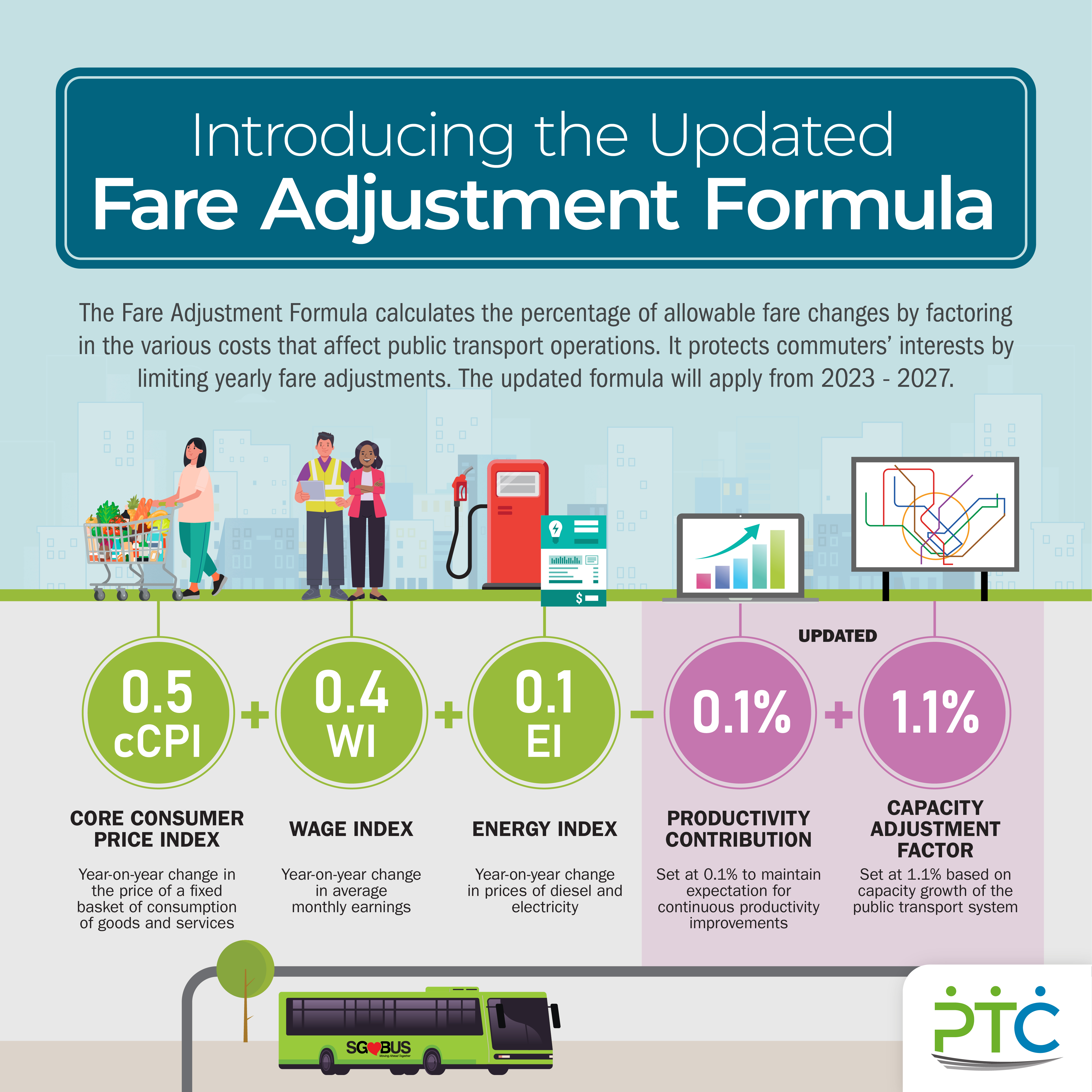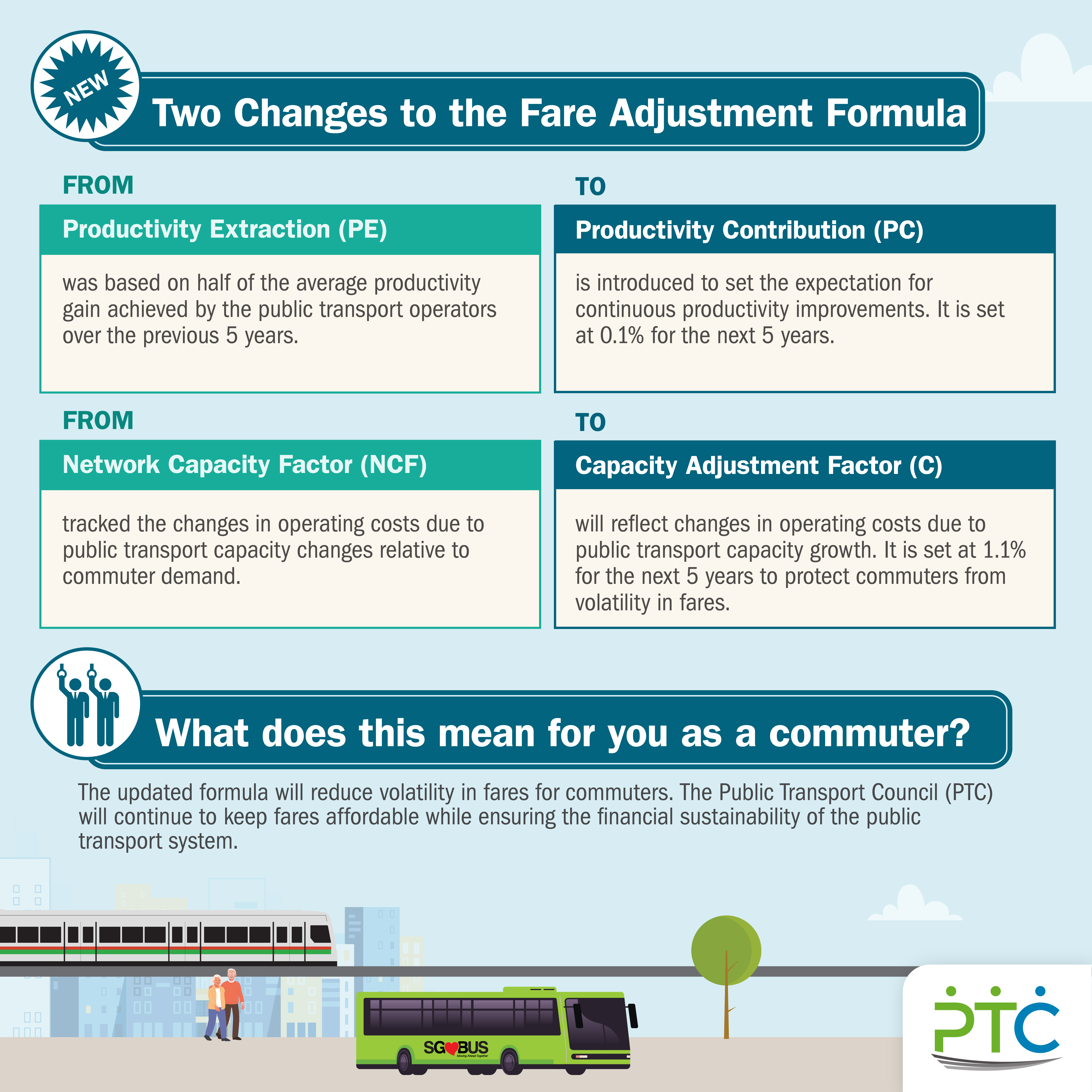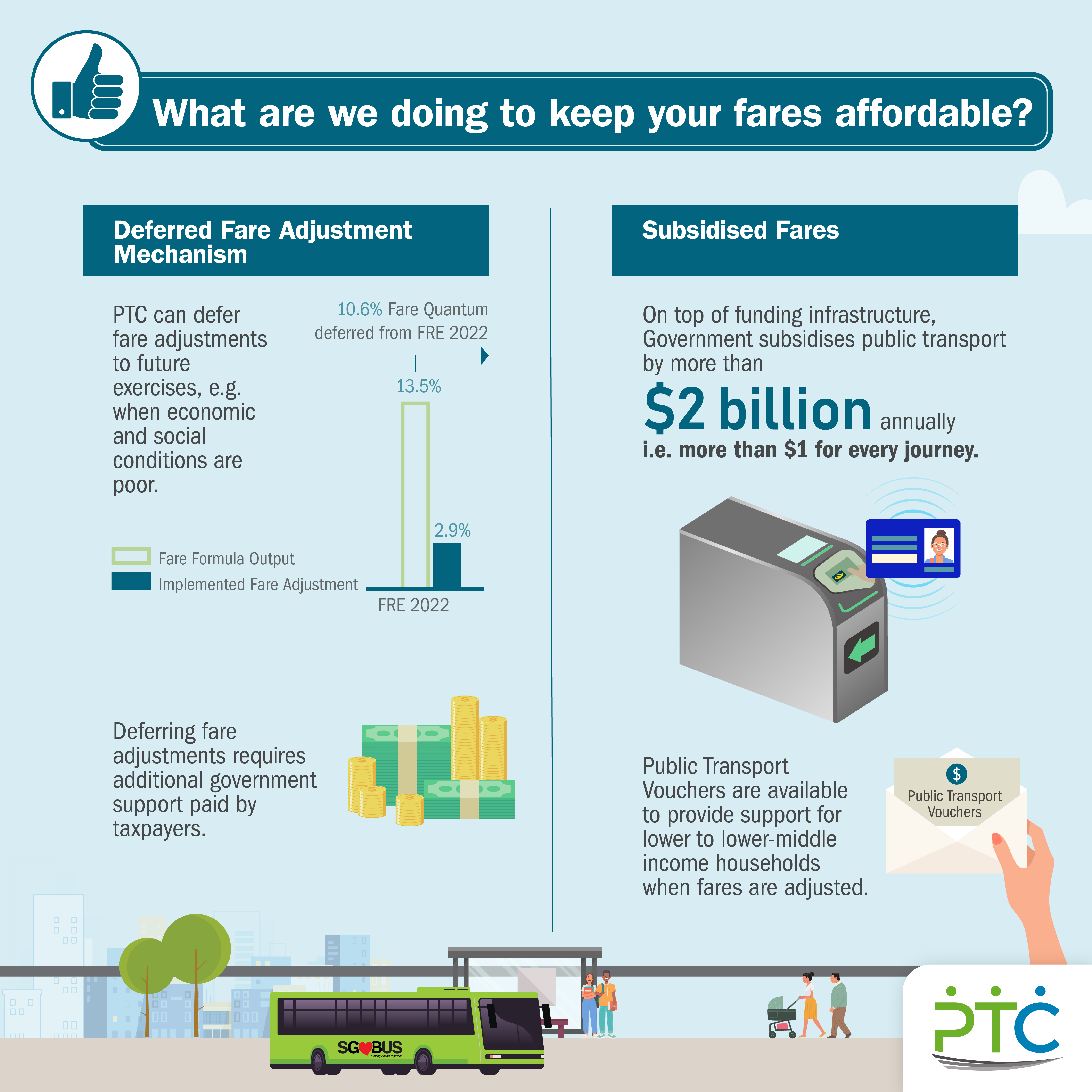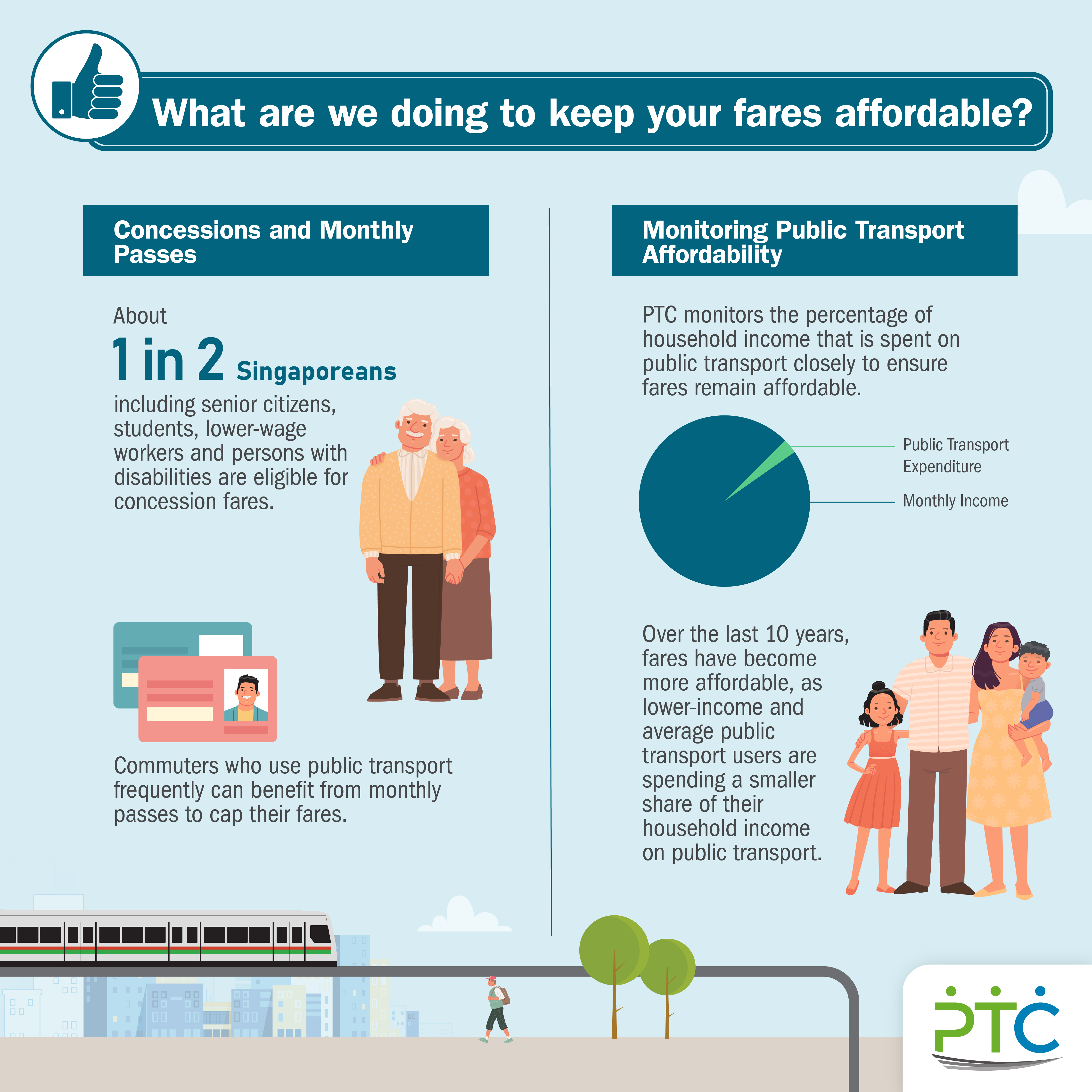2023 Fare Adjustment Formula & Mechanism Review
Commuters will benefit from reduced volatility in the new fare adjustment formula
The Deferred Fare Adjustment mechanism will help ensure that fare adjustments continue to be affordable
The Public Transport Council (PTC) has completed the review of the public transport fare adjustment formula and mechanism. The new fare formula aims to reduce volatility of fare changes, while ensuring fare affordability for commuters and the financial sustainability of the public transport system.
2 In August 2022, Minister for Transport Mr S Iswaran appointed the PTC to review the effectiveness of the fare adjustment formula and mechanism.
3 The PTC formed a 10-member Workgroup to undertake the review. The Workgroup considered three major developments in the public transport landscape: (i) the inflationary environment, (ii) uncertainty in ridership patterns and recovery post-pandemic, and (iii) continuous enhancements to the public transport system with rising government subsidies,1 in order to make public transport more accessible, reliable and inclusive.
Recommendations by the Workgroup
4 The previous review was done in 2018 and the fare formula in use from 2018 to 2022 was:
|
0.5 cCPI + 0.4 WI + 0.1 EI – PE + NCF |
5 After engaging commuters in several focus groups, and consulting widely with academics, the National Transport Workers’ Union, public transport operators, as well as transport authorities and operators from other cities, the Workgroup’s recommendations on the fare adjustment formula are (see Annex A for details):
- Retain the Core Consumer Price Index, Wage Index and Energy Index at their existing weightages as they continue to closely reflect the operating cost structure of the public transport industry;
- Change the Productivity Extraction (PE)2 to a Productivity Contribution, fixed at 0.1% for the next five years, to maintain the expectation for public transport operators to strive for continuous productivity improvements; and
- Replace the Network Capacity Factor (NCF)3, with a Capacity Adjustment Factor, fixed at 1.1% for the next five years, based on actual and planned capacity improvements from 2020 to 2026, including the opening of the Thomson-East Coast Line. Compared to the NCF, a fixed C reduces variability due to capacity and ridership changes.
|
0.5 cCPI + 0.4 WI + 0.1 EI – PC + C |
where:
|
cCPI |
= |
Year-on-year change in core Consumer Price Index; |
|
WI |
= |
Year-on-year change in Wage Index measured by the Average Monthly Earnings (National Average); |
|
E |
= |
Year-on-year change in Energy Index which is a composite index derived from diesel and electricity prices; |
|
PC |
= |
Productivity Contribution set at 0.1%; and |
|
C |
= |
Capacity Adjustment Factor set at 1.1%, based on actual and planned capacity improvements from 2020 to 2026. |
7 The proposed fare adjustment formula will form the basis for the PTC’s deliberation at each year’s Fare Review Exercise (FRE) from 2023 to 2027. As with previous years, the 2023 fare adjustment quantum will be finalised and announced in the second half of this year.
8 In addition, the Workgroup recommends retaining the Deferred Fare Adjustment mechanism. Under the mechanism, PTC has the discretion to defer the fare adjustment quantum, in part or in full, to subsequent FREs, taking into consideration the prevailing social and economic conditions. This helps to moderate the impact of fare increases on affordability in extenuating circumstances, such as the COVID-19 pandemic, or due to large spikes in energy prices in the recent FRE 2022. The PTC is mindful that deferred fare increases require additional government subsidies to be provided, and hence should be exercised judiciously. PTC will also continue to monitor public transport expenditure as a percentage of household income to keep track of fare affordability. This has come down over the past decade.
Ensuring Better Rides, Affordable Fares, and Sustainable Public Transport
9 An affordable, high-quality and financially sustainable public transport system is a shared responsibility between the Government, public transport operators, and commuters. Taken as a whole, the recommendations will ensure that the fare adjustment formula and mechanism continue to keep pace with cost changes in the public transport industry and drive efficient operations, while ensuring affordability for all commuters.
10 PTC Chairperson, Ms Janet Ang, said, “PTC’s twin mandate is to balance fare affordability and financial sustainability of the public transport system. The Workgroup consulted widely and deliberated extensively, and we have gained many insights through our dialogue sessions and stakeholder engagements. We need a fare adjustment formula and mechanism that is relevant in the face of global changes, but at the same time, maintains the affordability of fares and is flexible enough to consider prevailing social and economic conditions when making adjustments. The updated formula provides a good basis to ensure that our public transport system continues to provide high-quality, efficient and reliable service to all Singaporeans. We are confident that together, we can achieve our aspiration of better rides, affordable fares, and a sustainable public transport system – one that continues to bring good value to our people.”
1 The Government spends more than $2 billion dollars annually to subsidise public transport operations. The Government also provided an additional $200 million in subsidies to shield commuters from the spike in the 2022 fare adjustment due to the high energy prices.
2 In the 2018-2022 formula, Productivity Extraction (PE), was set at 0.1% based on half of the productivity gain achieved by the public transport operators from 2012 to 2016.
3 In the 2018-2022 formula, Network Capacity Factor (NCF) measured capacity provision relative to passenger demand for the entire public transport system. Its value ranged from 1.6% to 3.9% before it was suspended from February 2020, as the sharp drop in ridership due to COVID-19 would have caused a significant spike in the value of NCF for FRE 2021.




